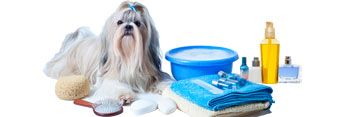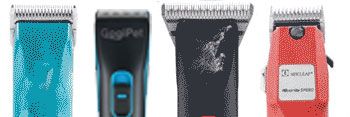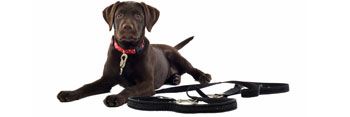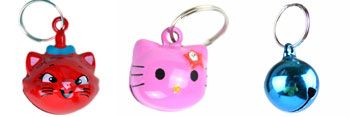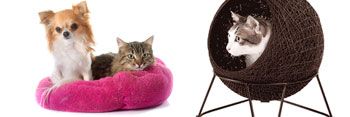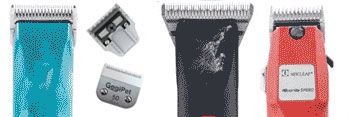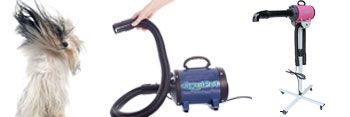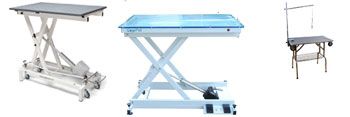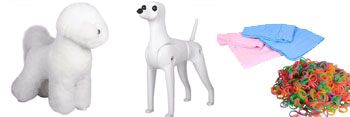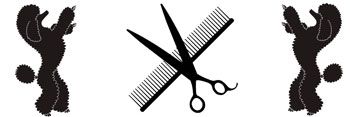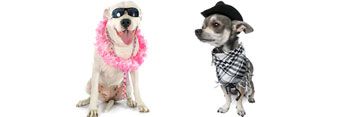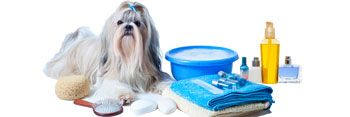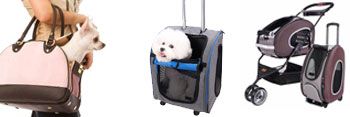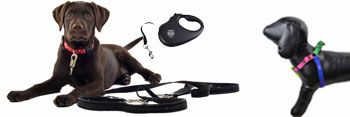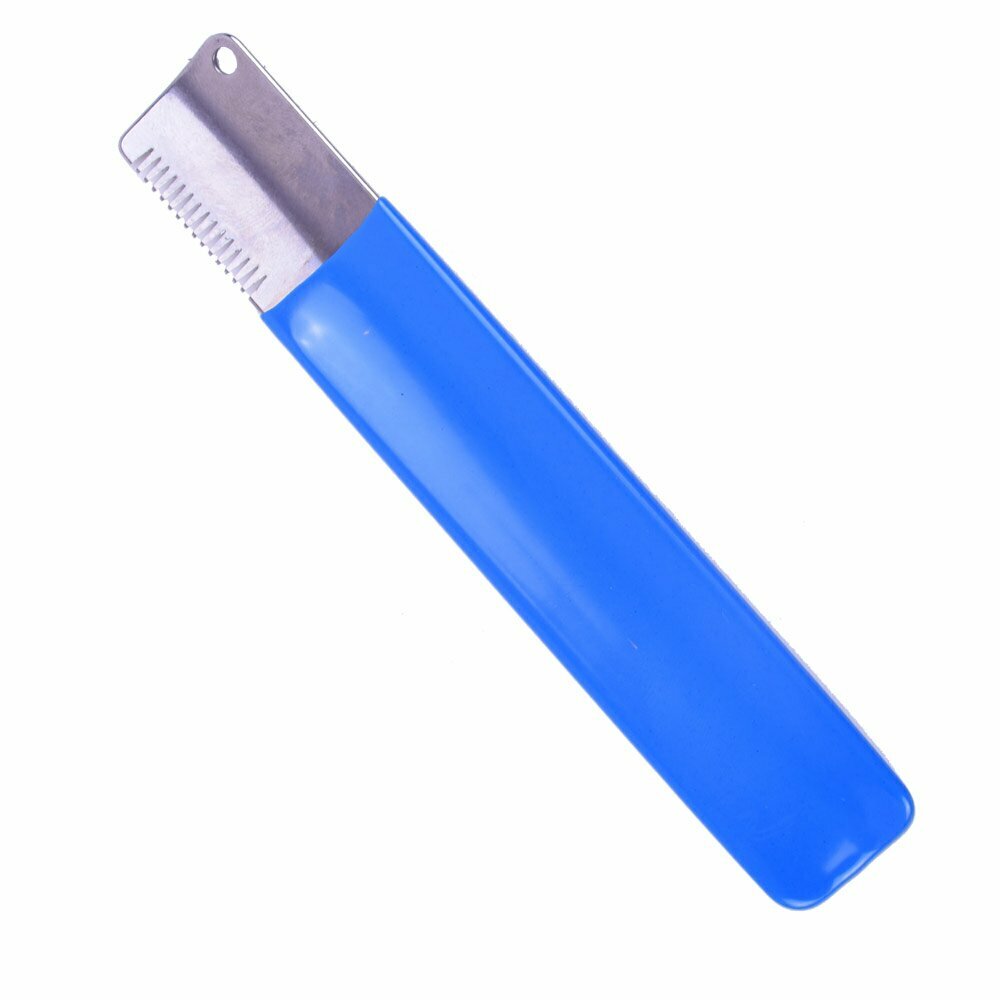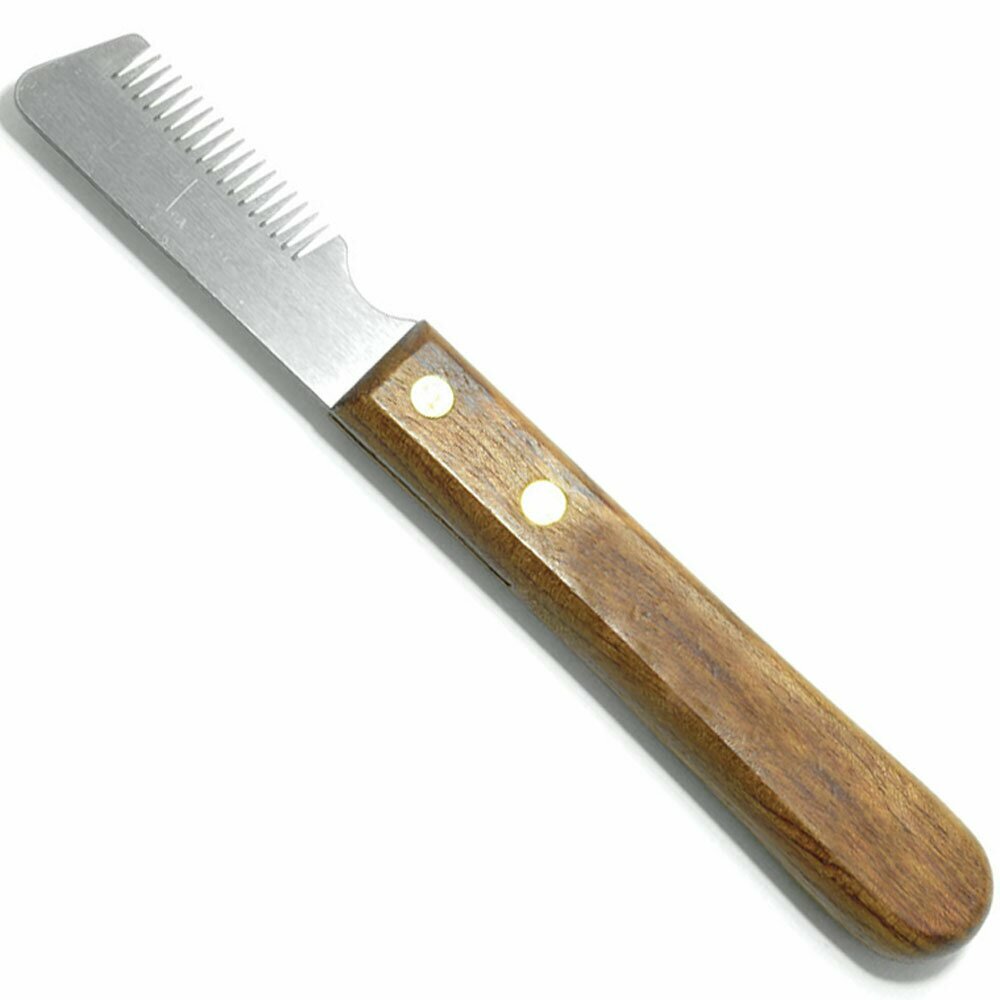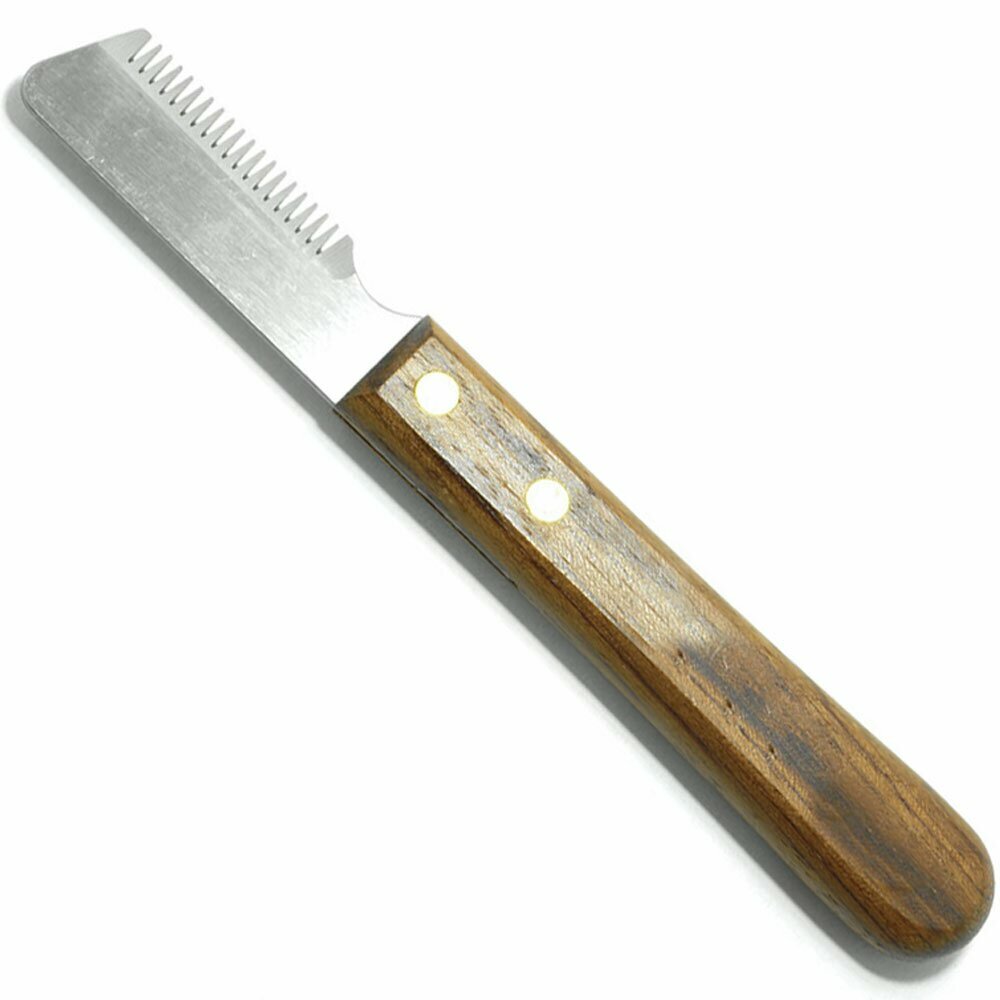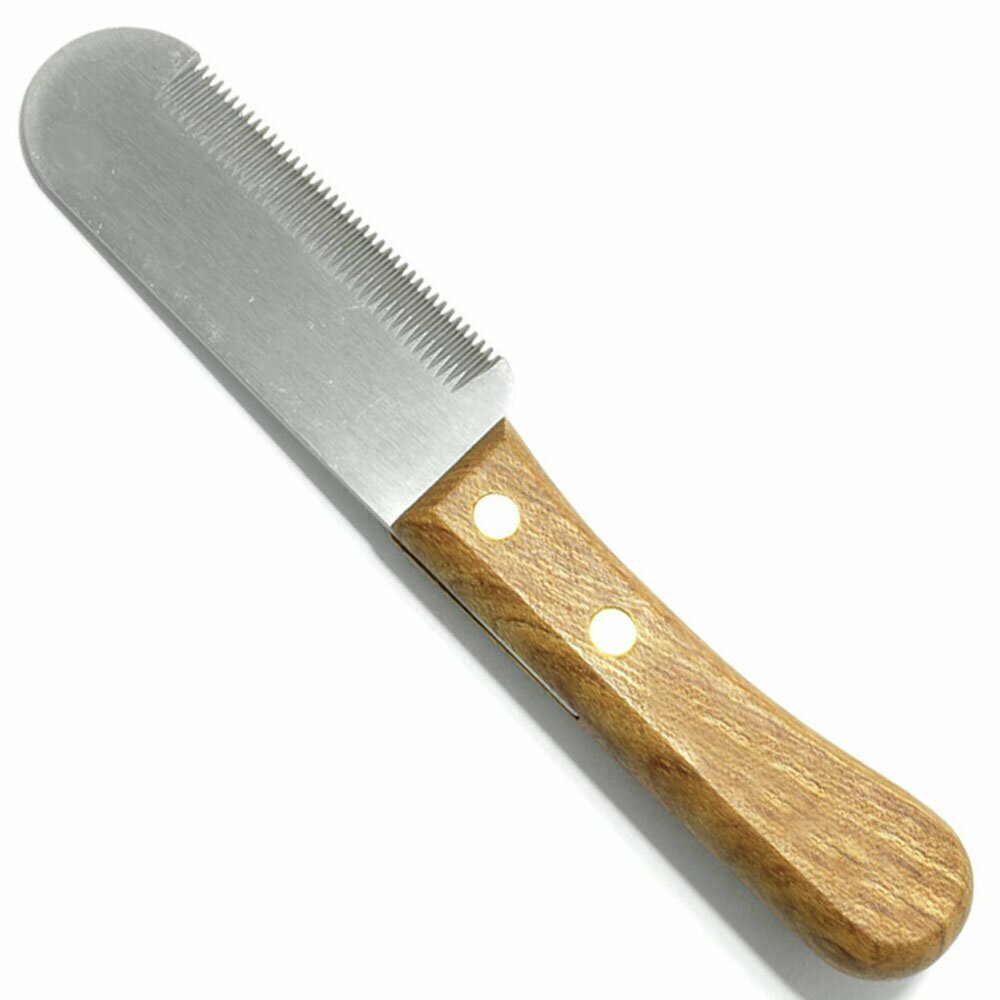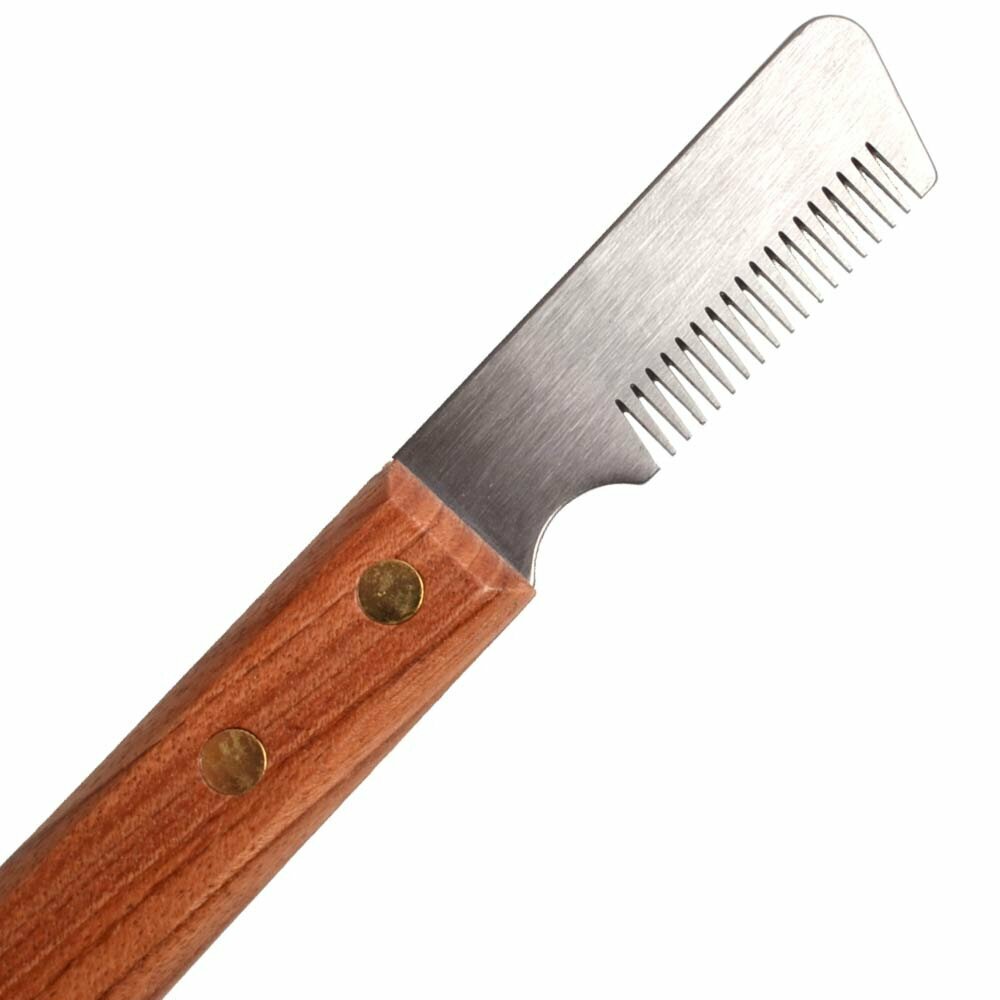
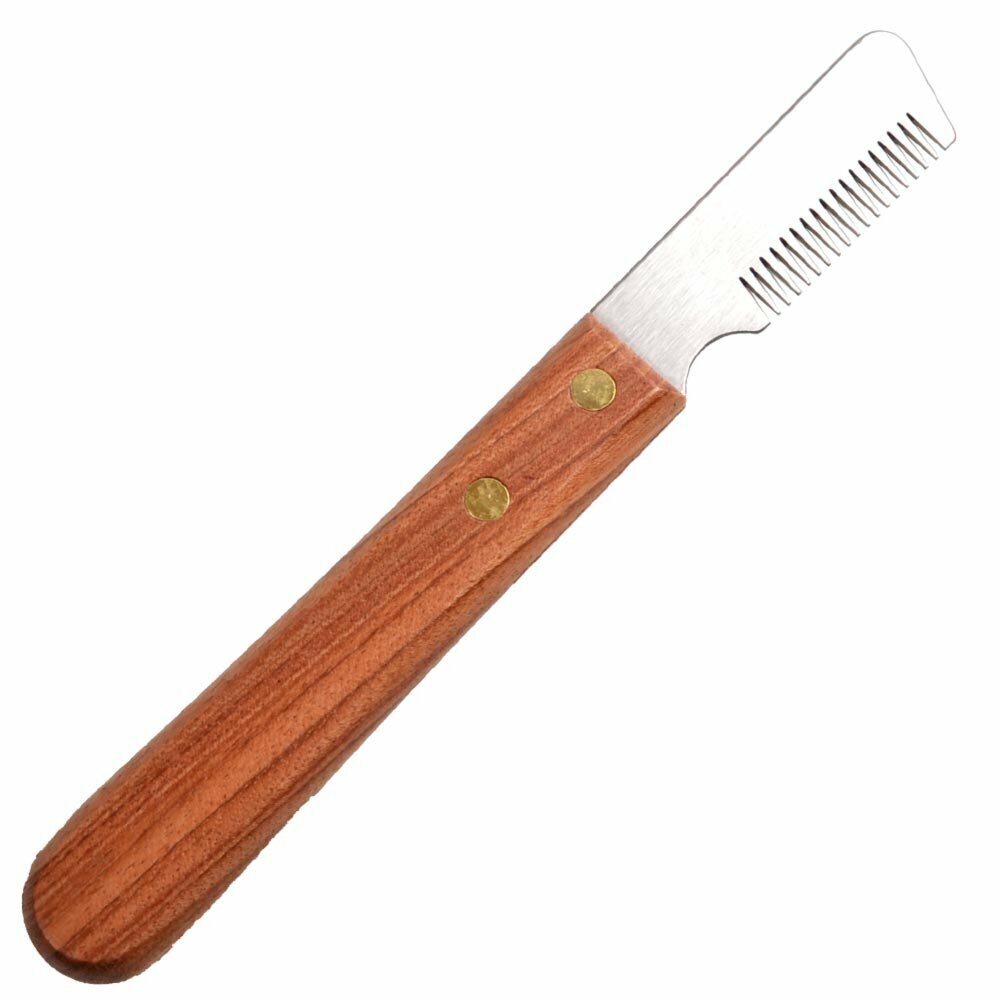






€20.82*
instead of €27.78* (25.05% saved from the RRP)Available, delivery time: ca. 1-8 working days* after receipt of payment
Stripping knife with 18 teeth.
Stripping knife with wooden handle and 18 teeth.
Lightweight GogiPet © stripping knife with soft wooden handle and short blade. This stripping knive should be in every Pet Grooming.
Stripping knife details:
- 18 teeht
- Right hand stripping knife
- Ergonomic handle made of wood
- Specially designed for dogs
- The blades are specially treated for high resistance and high quality
Onlinezoo GogiPet © stripping knife special price
Here are a few hand stripping tips from our dog groomer:
Rough-haired (wiry coat) and stock haired dog breeds should be stripped according to the breed standard, so that the coat colour and the hardness of the breed are preserved. The dead top coat is stripped with a stripping knife or by hand to make room for new hair. Rough topcoat does not go out by itself when the coat is changed by today's breeding, but gets stuck in the coat channel. By plucking out the "mature" or "dead" hair with a stripping knife, the hair channel is ready for new hair (no fear of stripping, it does not hurt, the mature hair is only stuck in the skin and begins to itch if it is not pulled out).
Stripping should be started very early so that your dog gets used to it quickly and the coat remains in good condition.
A clip with a pet clipper would gradually destroy the coat structure forever, its breed typical, firm and wiry hair is lost the coat becomes softer, curly, more susceptible to dirt, tangles more easily, it causes itching and excessive hair, skin diseases are encouraged and the colour intensity is lost and blurs.
With regular stripping (approx. every 2 months, the intervals vary according to breed and hair type) a new layer of hair has already grown back ("rolling coat"). It is very important that stripping with the stripping knife is only done on rough haired dogs with a very good coat structure.
If your rough-haired dog has always been shorn, then it is usually not easy to trim him completely with the stripping knife.
In such cases the coat can be repaired step by step. Pull hairs out as much mature hair as possible with the stripping knife. Do this carefully so that it does not hurt the dog. I prefer to use the flat stripping knife for coarse coat or the stripping knife for fine coat, depending on the coat thickness. If only very few hairs can be removed, then I do the first "stripping" only with a Shedding Blade.
If there are soft, mostly curled hairs in the coat, then the undercoat has already worn through the clipping, this can be removed with the Coat Master, the Coat Master should generally be applied before stripping with the stripping knife.
Now you can work with the pet clipper to bring the coat to the same length. The next stripping takes place in 8 - 12 weeks (this differs from dog to dog). Now you should already be able to stripp several hairs with the stripping knife. If not all hairs can be pulled out yet, you can shorten them again with the clipper or scissors. After a few applications the coat should be healthy enough that you only have to trim with the trimming knife without having to cut the coat separately.
Here are a few examples of dogs which should be stripped with a stripping knife:
- Norwich & Norfolk Terrier
- Cairn Terrier
- Lakeland Terrier
- Airedale Terrier
- Irish & Welsh Terrier
- West highland White Terrier
- Scottish Terrier
- rough-haired dachshund
- Jack Russell Terrier
- Schnauzer
- All rough-haired dog breeds with double hair
>>> back to out stripping knives and trimming tools <<
0 of 0 reviews
Login
Suggested products
You are a pet groomer or retailer and would like to offer our products for sale to your customers?
Register as reseller

